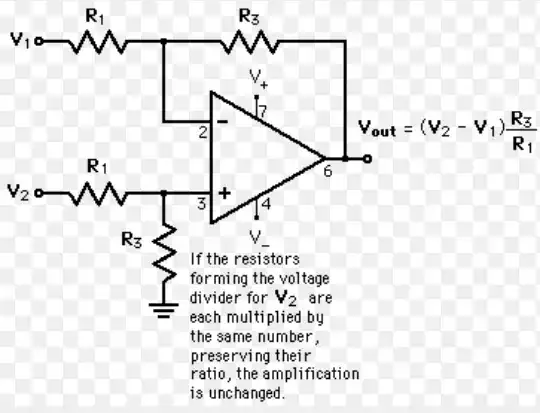I have a voltage divider, and the output goes to OP amp.
This is from my schoolwork.
-1 to +1 input | [R1] 1000 ohms | ---> output to op amp | [R2] 1000 ohms | 2v
How do I calculate output that goes to op amp? Regular voltage divider formula is Vout=Vin×(R2÷(R1+R2)) But lets say V1 is -1 and other end is 2v, what do i take for Vin? 3 volts?
Edit:
Found the whole exercise

V1 is 4v V2 is from -1v to 1v And where the ground symbol is, there should be 2v. What do I take for V2 in formula whem V2 is -1 or +1?